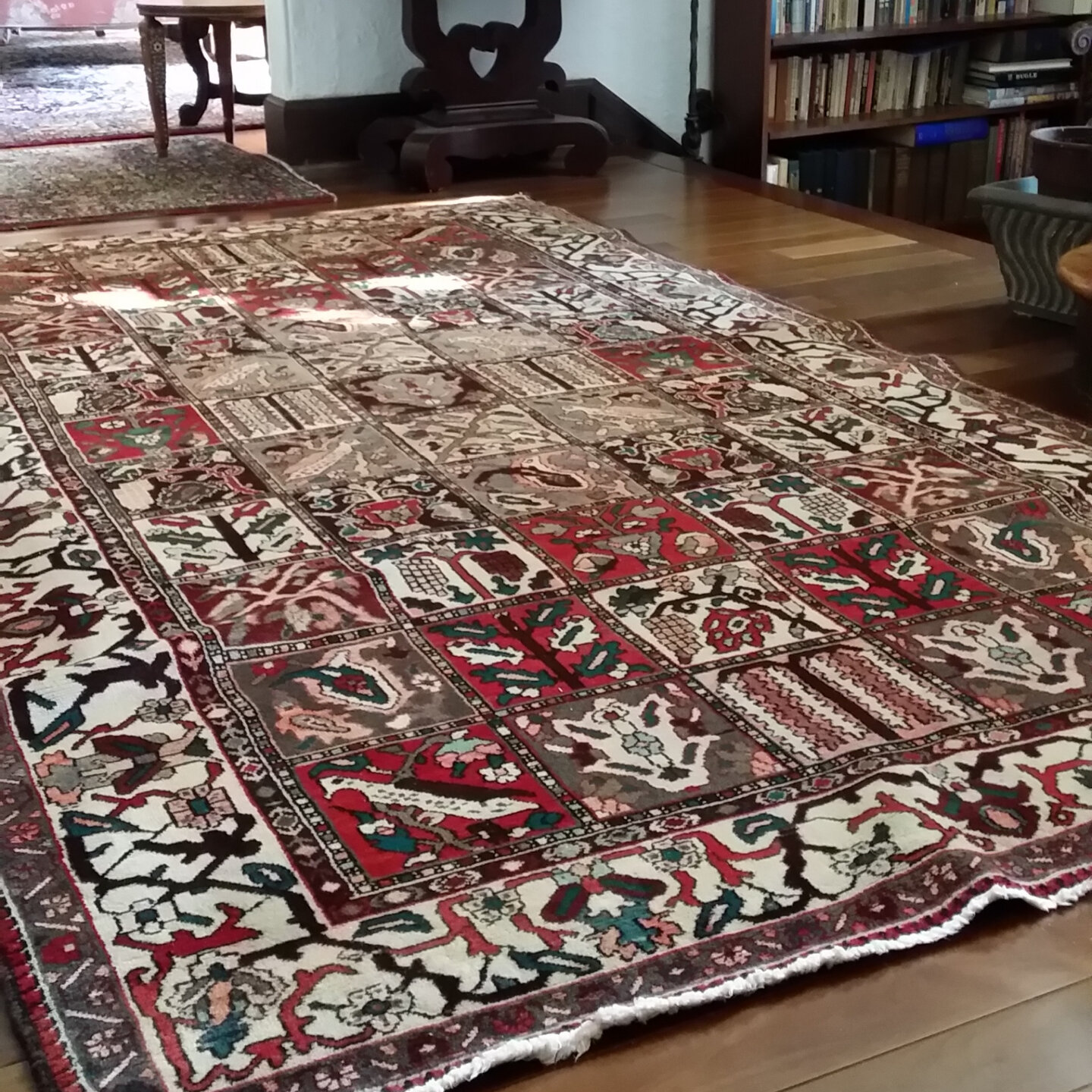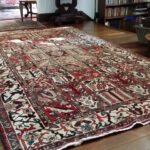Persian rugs and carpets of various types were woven in parallel by nomadic tribes in village and town workshops, and by royal court manufacturers alike. As such, they represent miscellaneous, simultaneous lines of tradition, and reflect the history of Iran, Persian culture, and its various peoples. The carpets woven in the Safavid court manufactures of Isfahan during the sixteenth century are famous for their elaborate colors and artistic design, and are treasured in museums and private collections worldwide today. Their patterns and designs have set an artistic tradition for court manufacturers. It was kept alive during the entire duration of the Persian Empire up to the last royal dynasty of Iran.
History of Persian rug production
The process of creating a Persian rug started with the grazing of sheep. Persian rugs are traditionally spun from sheep’s wool, the quality of which varies depending on the breed of sheep, climate, pasturage, and time of shearing. The women then turned the wool into yarn by hand and boiled the threads with natural dyes from plants and insects. For example, madder roots, cochineal, chamomile, grape leaves, pomegranate rind, and indigo produce reds, yellows, and blues. Only after the threads have dried does the weaving begin.
Although the exact origin of Persian rugs is not known, the art of carpet weaving in Iran dates back more than 2500 years ago. Persian carpets and rugs were initially woven as articles of necessity to cover the floors of nomadic tribesmen, giving them protection from the cold and damp. The natural progression of the skill and craft involved in the creation of these works of art has been passed down from generation to generation over the centuries throughout periods of peace, invasion, and war. As international trade developed, the variety of patterns and designs grew.
The rug is finally cut from the loom, washed, and dried in the sun. Although wool is the most traditional material, silk is also an option, but because it is a fine material, it doesn’t tolerate stress as well; therefore, silk rugs are ordinarily displayed on walls instead of on the floor.
Many historians consider Cyrus the Great to be the cause of the introduction of Persian carpet art. It is said that the tomb of Cyrus, who was buried at Pasargad near Persepolis, was covered with precious carpets.
In the last quarter of the 19th Century and during the reign of Qajar, trade and the carpet industry flourished once more with Tabriz merchants exporting carpets to Europe through Istanbul. By the end of the 19th Century, some European and American companies even set up businesses in Persia and organized craft production destined for western markets. Through this development new designs were made with Western tastes in mind.
Moving to Iran to develop new carpets for export, their work with the master weavers of Iran led to the development of carpets suited to Western interiors such as the Ziegler rug which is currently one of the most popular rugs in production.
Weavers spend anywhere from several months to several years, depending on the size and quality of the rug, hunched over a loom creating thousands of knots.
Today, carpet weaving is by far the most widespread handicraft in Iran. Persian carpets are renowned for their richness of color, variety of spectacular artistic patterns, and quality of design. In palaces, famous buildings, mansions, and museums the world over, a Persian carpet is amongst the most treasured of possessions.













